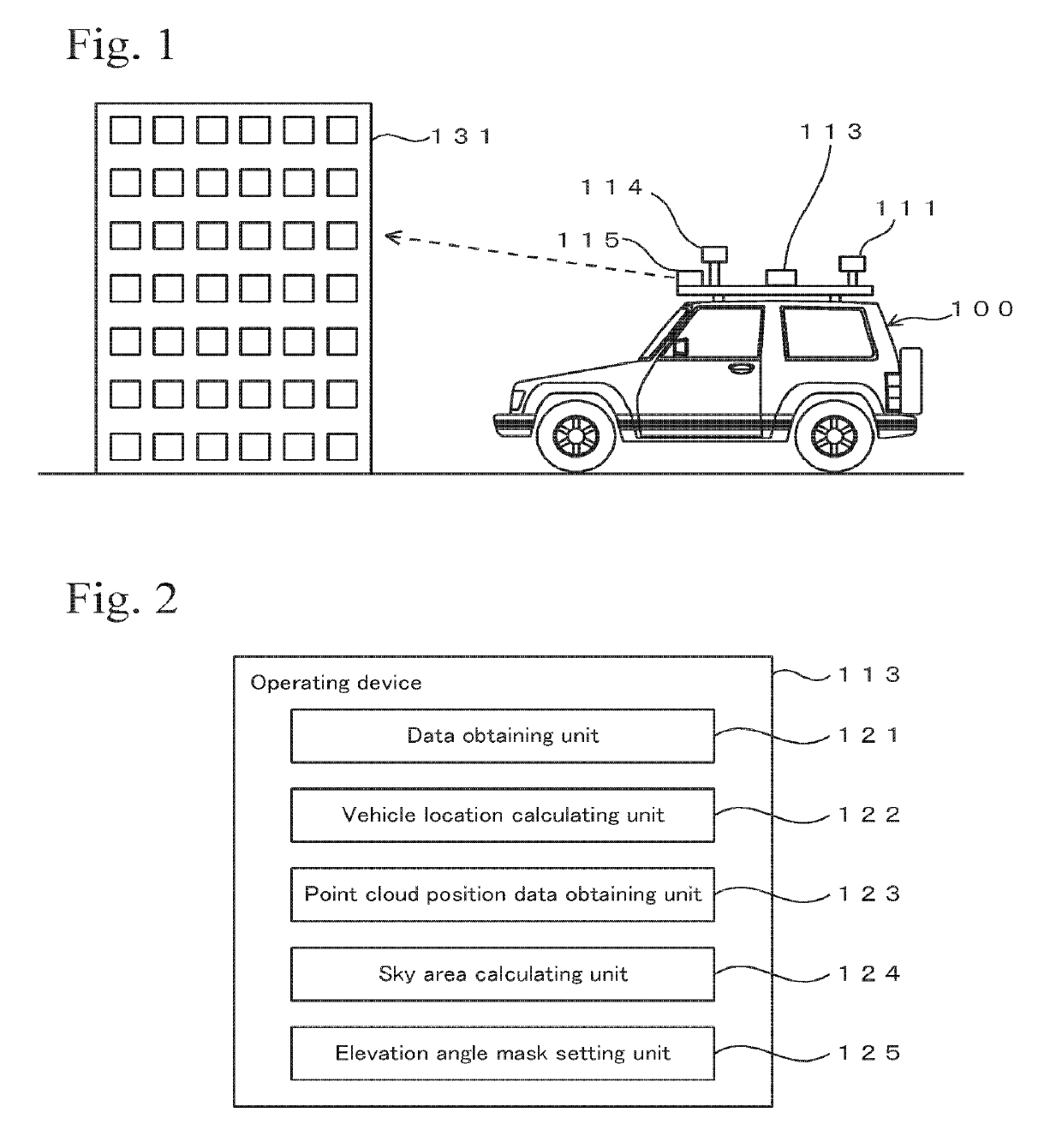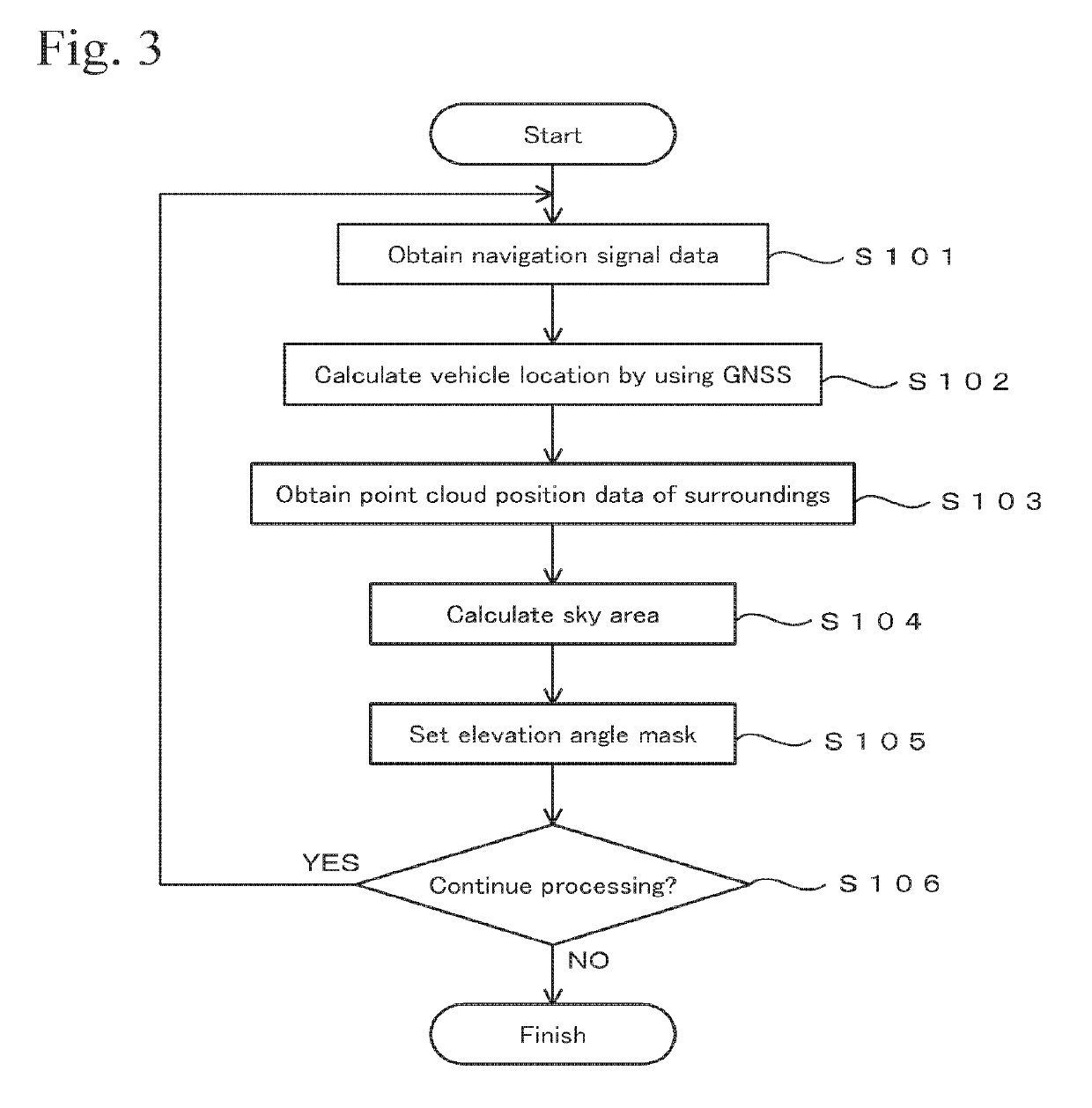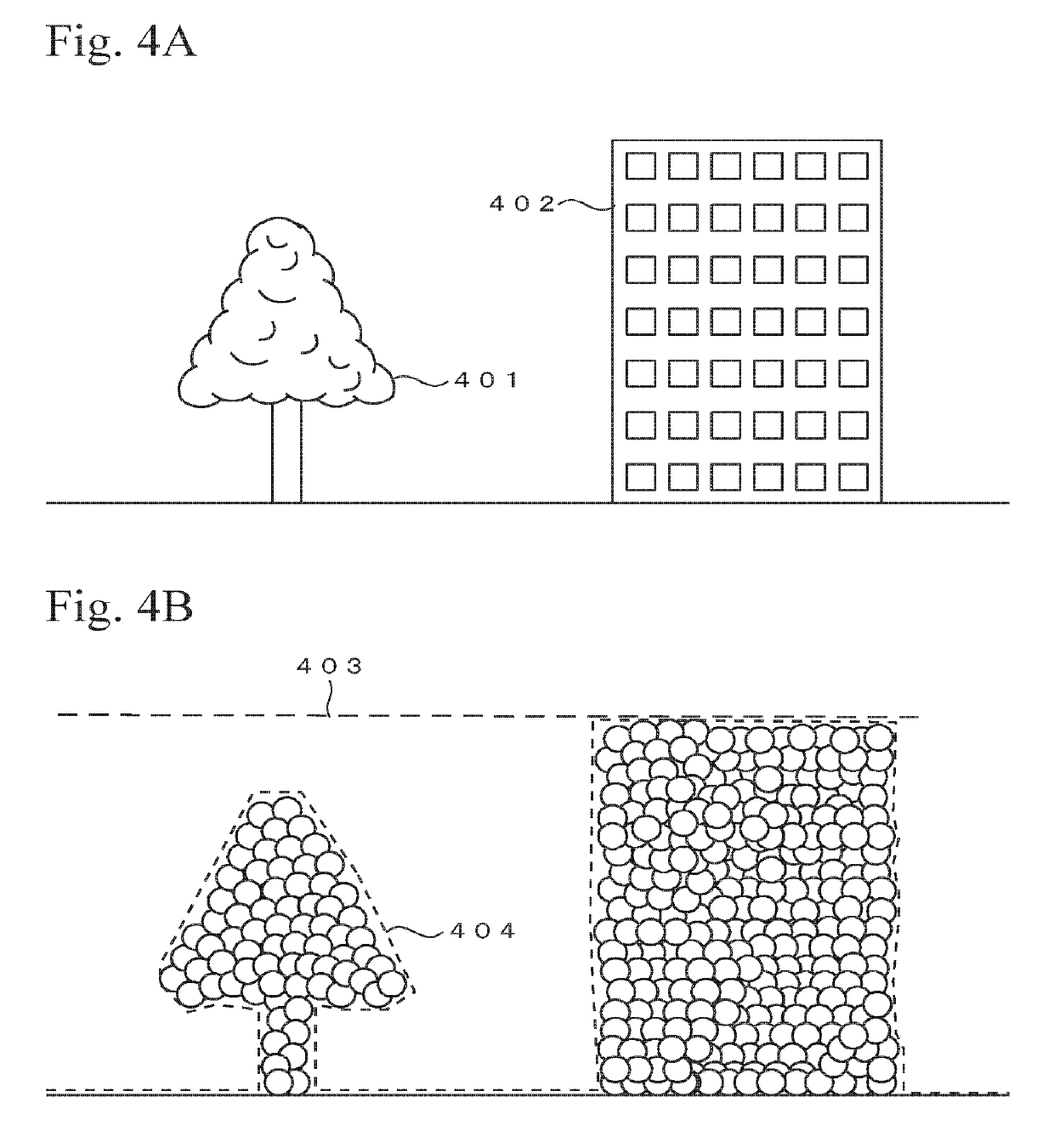Navigation signal processing device, navigation signal processing method, and navigation signal processing program
a technology of navigation signal and processing method, applied in the field of positioning technique, can solve the problems of inadequacies of the technique disclosed in japanese unexamined patent application laid-open no. 2013 and the tendency to perform positioning using a gnss with less precision, and achieve the effect of preventing the decrease of positioning precision
- Summary
- Abstract
- Description
- Claims
- Application Information
AI Technical Summary
Benefits of technology
Problems solved by technology
Method used
Image
Examples
first embodiment
1. First Embodiment
Structure of Operating Device
[0030]Here, a case of obtaining three-dimensional information surrounding a vehicle in real time and setting an elevation angle mask based on the three-dimensional information will be exemplified. FIG. 2 shows a block diagram of the operating device 113 that is equipped on the vehicle 100. The operating device 113 includes a data obtaining unit 121, a vehicle location calculating unit 122, a point cloud position data obtaining unit 123, a sky area calculating unit 124, and an elevation angle mask setting unit 125 as functional units. The operating device 113 has functions as a computer and includes a CPU, a RAM, a ROM, necessary storage devices, various kinds of operating devices such as an image processing integrated circuit, and various kinds of interfaces. The functional units of the operating device 113 may be constructed of software or may be constructed of dedicated hardware. For example, each of the functional units shown in FIG...
second embodiment
2. Second Embodiment
[0049]Here, a case of judging whether there is a blocking object between the antenna and the navigation satellite and selecting an appropriate navigation satellite will be exemplified.
Structure
[0050]FIG. 5 shows a block diagram of an operating device 113 that is different from the type of the operating device 113 shown in FIG. 2. This operating device 113 includes a data obtaining unit 121, a vehicle location calculating unit 122, a point cloud position data obtaining unit 123, a directional line setting unit 126, an overlap judging unit 127, and a weighting setting unit 128. Here, the data obtaining unit 121, the vehicle location calculating unit 122, and the point cloud position data obtaining unit 123 are the same as those in the case shown in FIG. 2.
[0051]The directional line setting 126 selects a line that connects the antenna 111 and a captured navigation satellite as a directional line. The directional line is set as described below. First, the position of...
third embodiment
3. Third Embodiment
[0066]The processing relating to the navigation satellite, which is unsuitable for use because the navigation satellite is blocked by a building or the like, may be performed in postprocessing. In this case, GNSS data that is received from the navigation satellites while the vehicle travels is stored as it is. At this time, inappropriate navigation satellites are not detected, and the original received data is linked with the time information as it is and is then stored in a storage device such as a semiconductor memory, a hard disk drive, or the like. On the other hand, positioning of the vehicle 100 is performed in real time by using the GNSS data, and three-dimensional point cloud position data is obtained by the laser scanner 115 at the same time.
[0067]Then, the obtained data is processed as described below at a later timing. Here, the processing shown in FIG. 3 is performed by using the GNSS data and the three-dimensional point cloud position data. By perform...
PUM
 Login to View More
Login to View More Abstract
Description
Claims
Application Information
 Login to View More
Login to View More - R&D
- Intellectual Property
- Life Sciences
- Materials
- Tech Scout
- Unparalleled Data Quality
- Higher Quality Content
- 60% Fewer Hallucinations
Browse by: Latest US Patents, China's latest patents, Technical Efficacy Thesaurus, Application Domain, Technology Topic, Popular Technical Reports.
© 2025 PatSnap. All rights reserved.Legal|Privacy policy|Modern Slavery Act Transparency Statement|Sitemap|About US| Contact US: help@patsnap.com



